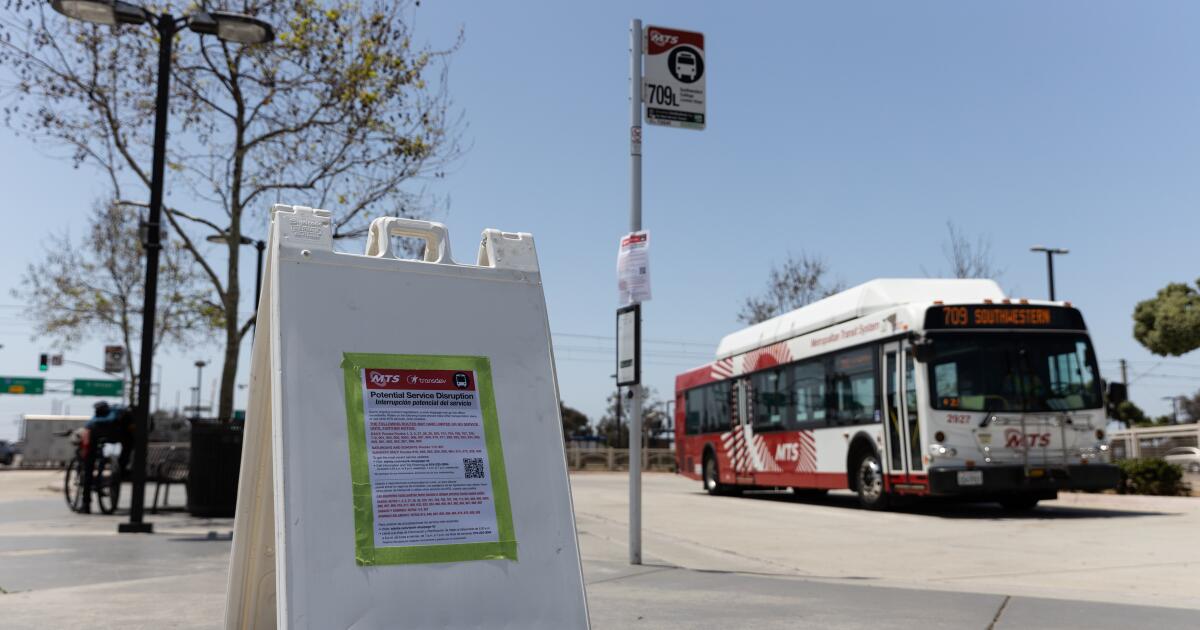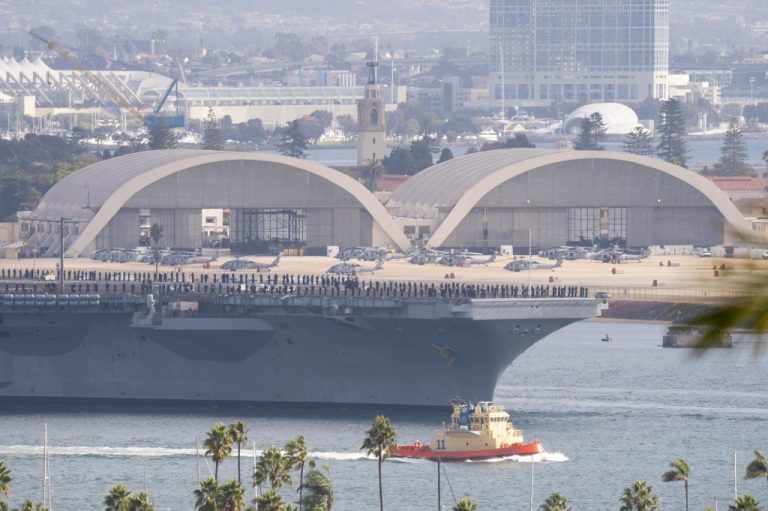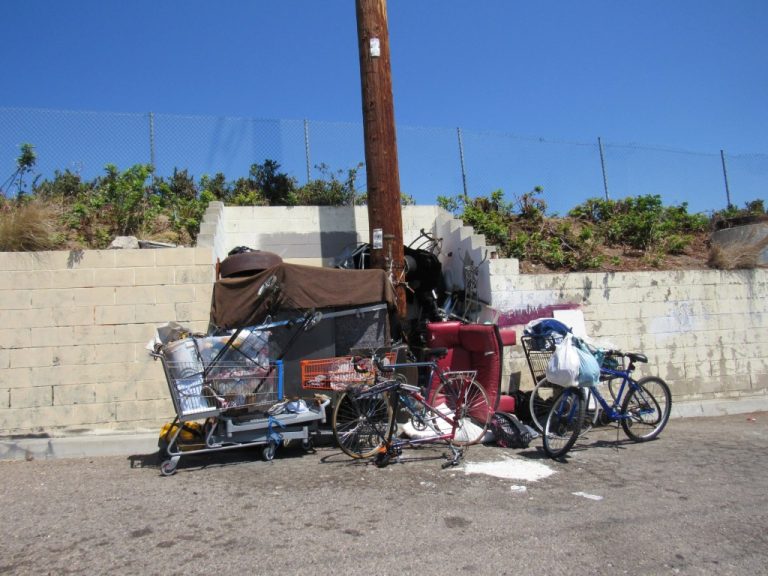
The Metropolitan Transit System will spend more money than ever before on new trains, trolley cars and other infrastructure in the new fiscal year.
The MTS board approved this week a $243 million capital improvement budget that will pay for 38 new buses, 22 new trolley cars and overhead charging infrastructure to support conversion to an all-electric bus fleet.
The new infrastructure funding comes a month after MTS announced two efforts to boost ridership: enhanced security to make riders feel safer and expanded service to make using transit more convenient.
Sharply increased use of mass transit is crucial to San Diego’s plans to cope with population growth. Instead of encouraging more sprawling suburbs, the city plans to allow construction of thousands of high-rise housing developments in existing neighborhoods.
Traffic on city roads will grind to a halt if too many residents rely on driving to get around, so city officials say mass transit must be part of any long-term solution.
The $243 million capital budget, which covers fiscal year 2025, prioritizes getting the MTS bus fleet to all-electric by 2040.
The budget includes $58.3 million for 38 new buses, including 10 battery-electric and 28 compressed natural gas, and $38.8 million for overhead charging infrastructure at each existing division.
There is also $69.5 million for rail infrastructure improvements and maintenance, $21 million for new trolley cars and $21.3 million for maintenance facilities and passenger amenities at transit centers.
“Prioritizing this capital investment in our transit agency will help increase ridership and keep San Diego’s transit system in good working condition with modern amenities and well-maintained vehicles,” said San Diego Councilmember Stephen Whitburn, who is serving as MTS board chair.
The new budget comes as MTS is scaling up security on buses and trolleys to make riders feel safer. There are now more officers making themselves more visible and reducing response times to crimes and other incidents.
“Riders want to feel safe, and seeing an increased security presence during their trip does just that,” Whitburn said.
The security enhancements, which cost $4.2 million per year, came in response to a passenger satisfaction survey that showed more security was a high priority for riders.
There has been a 60 percent increase in the number of MTS security officers, including twice as many officers patrolling buses and twice as many officers in plain clothes. There are also more security officer “train” teams on trolley lines — up from five to six teams per shift to eight to 10 teams per shift.
“Now more than ever, MTS security is more than fare enforcement,” said El Cajon Councilmember Steve Goble, who is serving as MTS board vice chair. “It’s about having a presence and being visible. It’s about being that lifeline for people when they really need it.”
Other changes include boosting the number of officers conducting homeless outreach to allow seven-days-a-week coverage and adding security outposts at busy transit centers to increase visibility.
In addition to increasing security staff, MTS consolidated its around-the-clock hotlines into one number, (619) 595-4960. Riders can now call or text that number to report any type of incident.
The service improvements announced by MTS include 24-hour bus service between the border and downtown, all-day 15-minute service on all three trolley lines seven days a week and expanded hours of service on many routes.
A new payment method will also become available in April. It will allow riders to tap a credit or debit card on a validator to pay a fare, bypassing ticket machines altogether.
MTS has also made stops safer and cleaner, including new shade and lighting at some stops and better trash collection at others.
MTS operates 97 bus routes and three trolley lines in 10 cities and unincorporated areas of the county. The system serves 250,000 people a day on weekdays and about 68 million riders a year.






